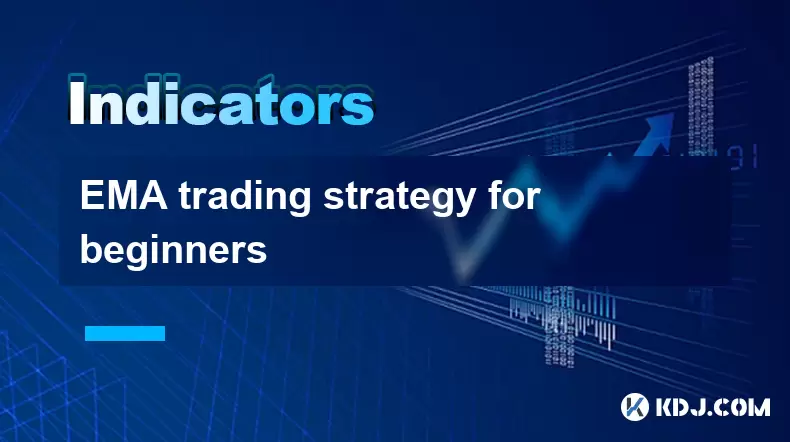-
 Bitcoin
Bitcoin $117,462.8204
-2.03% -
 Ethereum
Ethereum $3,061.1595
1.10% -
 XRP
XRP $2.9139
-2.19% -
 Tether USDt
Tether USDt $1.0002
0.02% -
 BNB
BNB $685.1357
-1.24% -
 Solana
Solana $161.3803
-2.11% -
 USDC
USDC $1.0002
0.04% -
 Dogecoin
Dogecoin $0.1948
-2.92% -
 TRON
TRON $0.2987
-0.89% -
 Cardano
Cardano $0.7330
-1.27% -
 Hyperliquid
Hyperliquid $47.7888
0.13% -
 Stellar
Stellar $0.4514
-2.93% -
 Sui
Sui $4.0169
2.74% -
 Chainlink
Chainlink $15.7088
-2.57% -
 Hedera
Hedera $0.2356
-3.33% -
 Bitcoin Cash
Bitcoin Cash $488.6656
-3.61% -
 Avalanche
Avalanche $21.2955
-1.47% -
 UNUS SED LEO
UNUS SED LEO $9.0415
0.42% -
 Shiba Inu
Shiba Inu $0.0...01332
-0.82% -
 Toncoin
Toncoin $3.0124
-0.62% -
 Litecoin
Litecoin $94.2175
-2.07% -
 Polkadot
Polkadot $4.0011
-0.61% -
 Monero
Monero $333.5714
-3.46% -
 Uniswap
Uniswap $9.1114
-1.56% -
 Dai
Dai $1.0000
0.02% -
 Ethena USDe
Ethena USDe $1.0005
0.00% -
 Bitget Token
Bitget Token $4.4951
1.87% -
 Pepe
Pepe $0.0...01242
0.47% -
 Aave
Aave $321.9943
0.51% -
 Bittensor
Bittensor $434.1984
5.13%
EMA trading strategy for beginners
The Exponential Moving Average (EMA) helps traders identify trends and potential entry or exit points by giving more weight to recent price data.
Jul 15, 2025 at 06:07 am

Understanding the EMA Indicator
The Exponential Moving Average (EMA) is a type of moving average that gives more weight to recent price data. Unlike the Simple Moving Average (SMA), which treats all data points equally, the EMA reacts more significantly to recent price changes. This makes it particularly useful for traders who want to identify trends and potential entry or exit points quickly.
For beginners, understanding how EMA works is crucial. The EMA line smooths out price volatility and helps traders see the direction of the trend. It can be applied on any time frame — from 1-minute charts to daily or weekly ones — depending on your trading style.
There are different periods of EMA commonly used in trading strategies, such as the 9-day EMA, 21-day EMA, and 50-day EMA. Shorter EMAs respond faster to price changes, while longer EMAs offer a broader view of the trend.
Selecting the Right EMA Settings
Choosing the right EMA settings depends on your trading goals and time horizon. For day traders, shorter EMAs like 9 or 12 periods are often preferred because they capture quick price movements. On the other hand, swing traders might rely on longer EMAs such as 21 or 50 periods to filter out market noise and focus on the larger trend.
Many beginners find success using a dual EMA crossover strategy, where two EMAs — one short-term and one long-term — are plotted together. When the shorter EMA crosses above the longer one, it signals a potential uptrend, and when it crosses below, it may indicate a downtrend.
It’s essential to backtest your chosen EMA settings on historical data before applying them in live trading. Platforms like TradingView allow users to customize EMA indicators and test various combinations across different cryptocurrency assets.
Setting Up EMA on Your Trading Platform
To start using EMA, you’ll need to set it up on your preferred charting platform. Here’s how you can do it step-by-step:
- Open your charting tool (e.g., TradingView or Binance's native platform).
- Look for the indicators section, usually found at the top or bottom of the chart.
- Search for "EMA" in the indicator list.
- Select the desired period (e.g., 9, 21, or 50).
- Click "Add" or "Apply" to plot the EMA on your chart.
If you're using multiple EMAs, repeat the process for each one. Most platforms let you adjust colors and styles for clarity. Make sure the visual distinction between EMAs is clear, especially if you’re using two or more lines for crossovers.
You can also save your custom setup as a template so you don’t have to reconfigure it every time you open a new chart. This feature is especially helpful for those analyzing multiple cryptocurrencies simultaneously.
Interpreting EMA Signals in Crypto Markets
Cryptocurrency markets are known for their volatility, making EMA a valuable tool for spotting early signs of trend reversals or continuations. One of the most common EMA-based strategies involves watching for crossover signals. For example, when the 9-period EMA crosses above the 21-period EMA, it could suggest a bullish phase is beginning.
Another way to interpret EMA is by observing price interaction with the EMA line. If the price stays consistently above the EMA, it indicates strength in the asset. Conversely, if the price remains below the EMA line, it suggests weakness or a bearish trend.
Some traders use EMA not just as a directional signal but also as a dynamic support or resistance level. In an uptrend, the EMA line may act as a support zone, and during a downtrend, it might function as resistance. These insights can help beginners place stop-loss orders or set profit targets more effectively.
Common Mistakes Beginners Make with EMA
While EMA is a powerful tool, it's easy to misuse it without proper understanding. One common mistake is overloading the chart with too many EMAs, which can lead to confusion and false signals. Stick to one or two EMAs at first to avoid clutter and maintain clarity.
Another issue arises when traders ignore the broader market context. Even if an EMA crossover occurs, it doesn't guarantee a profitable trade. Always consider volume, news events, and overall market sentiment before making a decision.
Lastly, some beginners fall into the trap of chasing trades based solely on EMA signals without setting risk management parameters. It's important to define your entry, exit, and stop-loss levels before entering a trade to protect your capital.
FAQ: Frequently Asked Questions About EMA Trading Strategy
Q: Can I use EMA for intraday trading in crypto?
Yes, EMA is effective for intraday trading. Traders often use shorter periods like 9 or 12 to capture quick moves in price. However, be cautious of false signals due to high volatility in crypto markets.
Q: Should I combine EMA with other indicators?
Combining EMA with other tools like RSI or MACD can improve accuracy. Using only EMA may result in misleading signals, especially in choppy or sideways markets.
Q: What is the best EMA combination for beginners?
A popular beginner-friendly setup is the 9 and 21 EMA crossover strategy. It balances responsiveness and reliability, making it suitable for learning trend identification and entry/exit timing.
Q: How do I know if an EMA crossover is reliable?
Look for confirmation through increased volume or alignment with the overall trend. A crossover that occurs in the direction of the dominant trend tends to be more trustworthy than one against it.
Disclaimer:info@kdj.com
The information provided is not trading advice. kdj.com does not assume any responsibility for any investments made based on the information provided in this article. Cryptocurrencies are highly volatile and it is highly recommended that you invest with caution after thorough research!
If you believe that the content used on this website infringes your copyright, please contact us immediately (info@kdj.com) and we will delete it promptly.
- Solana Memecoins Hit the Big Time: PUMP and Sonic Get Coinbase Listing Boost!
- 2025-07-16 06:50:12
- Core Foundation's Rev+: Fueling Ecosystem Growth Through Revenue Sharing
- 2025-07-16 06:30:17
- Ripple, California, and Collaboration: A New Era for Crypto?
- 2025-07-16 06:30:17
- Roman Storm, DPRK Hackers, and Prosecutors: A Tangled Web
- 2025-07-16 06:50:12
- Bitcoin, Altcoins, and DeFi: Navigating the Evolving Crypto Landscape
- 2025-07-16 05:30:12
- DeFi Demystified: Navigating the Wild West of Decentralized Finance
- 2025-07-16 04:50:12
Related knowledge

Advanced RSI strategies for crypto
Jul 13,2025 at 11:01am
Understanding the Basics of RSI in Cryptocurrency TradingThe Relative Strength Index (RSI) is a momentum oscillator used to measure the speed and chan...

Crypto RSI for day trading
Jul 12,2025 at 11:14am
Understanding RSI in the Context of Cryptocurrency TradingThe Relative Strength Index (RSI) is a momentum oscillator used to measure the speed and cha...

Crypto RSI for scalping
Jul 12,2025 at 11:00pm
Understanding RSI in the Context of Crypto TradingThe Relative Strength Index (RSI) is a momentum oscillator widely used by traders to measure the spe...

What does an RSI of 30 mean in crypto
Jul 15,2025 at 07:07pm
Understanding RSI in Cryptocurrency TradingRelative Strength Index (RSI) is a momentum oscillator widely used in cryptocurrency trading to measure the...

What does an RSI of 70 mean in crypto
Jul 13,2025 at 06:07pm
Understanding the RSI Indicator in Cryptocurrency TradingThe Relative Strength Index (RSI) is a widely used technical analysis tool that helps traders...

How to avoid RSI false signals in crypto
Jul 13,2025 at 06:21pm
Understanding RSI and Its Role in Crypto TradingThe Relative Strength Index (RSI) is a momentum oscillator used to measure the speed and change of pri...

Advanced RSI strategies for crypto
Jul 13,2025 at 11:01am
Understanding the Basics of RSI in Cryptocurrency TradingThe Relative Strength Index (RSI) is a momentum oscillator used to measure the speed and chan...

Crypto RSI for day trading
Jul 12,2025 at 11:14am
Understanding RSI in the Context of Cryptocurrency TradingThe Relative Strength Index (RSI) is a momentum oscillator used to measure the speed and cha...

Crypto RSI for scalping
Jul 12,2025 at 11:00pm
Understanding RSI in the Context of Crypto TradingThe Relative Strength Index (RSI) is a momentum oscillator widely used by traders to measure the spe...

What does an RSI of 30 mean in crypto
Jul 15,2025 at 07:07pm
Understanding RSI in Cryptocurrency TradingRelative Strength Index (RSI) is a momentum oscillator widely used in cryptocurrency trading to measure the...

What does an RSI of 70 mean in crypto
Jul 13,2025 at 06:07pm
Understanding the RSI Indicator in Cryptocurrency TradingThe Relative Strength Index (RSI) is a widely used technical analysis tool that helps traders...

How to avoid RSI false signals in crypto
Jul 13,2025 at 06:21pm
Understanding RSI and Its Role in Crypto TradingThe Relative Strength Index (RSI) is a momentum oscillator used to measure the speed and change of pri...
See all articles

























































































